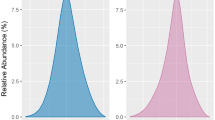Abstract
The introduction of factor Xa inhibitors advocated the initiation of clinical trials that addressed the value of anticoagulation in patients with hemodynamically stable primary pulmonary embolism (PE). In the Matisse trial in patients with PE, fondaparinux administered at therapeutic doses followed by vitamin K antagonists (VKA) has shown a comparable efficacy and safety profile to that seen with intravenous adjusted-dose unfractionated heparin/VKA. A long-acting derivative of fondaparinux, idraparinux, failed to achieve similar results. On the other hand, the Cassiopea study revealed that once weekly injections of idrabiotaparinux, a slightly modified form of idraparinux, have similar efficacy and better safety profile compared to VKAs in the long-term treatment of patients with PE. However, the inconvenient parenteral administration of both fondaparinux and idrabiotaparinux limits their routine clinical use. The availability of antithrombotic compounds that can be administered orally in fixed dose, owing to their predictable pharmacokinetics and pharmacodynamics, and have a lower potential for drug and food interactions has opened new horizons for the treatment of patients with PE. The Einstein PE, Amplify and Hokusai studies, conducted with rivaroxaban, apixaban and edoxaban, respectively, showed that for the treatment of PE they possess a more favorable benefit-to-risk profile than the conventional antithrombotic drugs. In addition, rivaroxaban and apixaban make it possible to treat uncomplicated PE patients from the beginning, without the need for the parenteral administration of heparins or fondaparinux, and edoxaban allows the treatment of fragile patients with lower doses. All of them cover a wide spectrum of clinical presentations, including PE patients at intermediate risk.
Similar content being viewed by others
References
Squizzato A, Luciani D, Rubboli A et al (2013) Differential diagnosis of pulmonary embolism in outpatients with non-specific cardiopulmonary symptoms. Intern Emerg Med 8:695–702
Quinlan DJ, McQuillan A, Eikelboom JW (2004) Low-molecular-weight heparin compared with intravenous unfractionated heparin for treatment of pulmonary embolism: a meta-analysis of randomized, controlled trials. Ann Intern Med 140:175–183
Büller HR, Agnelli G, Hull RD, Hyers TM, Prins MH, Raskob GE (2004) Antithrombotic therapy for venous thromboembolic disease: the seventh ACCP conference on antithrombotic and thrombolytic therapy. Chest 126(3 Suppl):401–428
The Rembrandt Investigators (2000) Treatment of proximal deep vein thrombosis with a novel synthetic compound (SR90107A/ORG31540) with pure anti-factor Xa activity. A phase II evaluation. Circulation 102:2726–2731
The Matisse Investigators (2003) Subcutaneous fondaparinux versus intravenous unfractionated heparin in the initial treatment of pulmonary embolism. N Engl J Med 349:1695–1702
Buller HR, Davidson BL, Decousus H et al (2004) Fondaparinux or enoxaparin for the initial treatment of symptomatic deep venous thrombosis. Ann Intern Med 140:867–873
Kearon C, Akl EA, Comerota AJ et al (2012) Antithrombotic therapy for VTE disease: antithrombotic therapy and prevention of thrombosis, 9th ed: American College of Chest Physicians Evidence—Based Clinical Practice Guidelines. Chest 141(2 Suppl):e419S–e494S
The PERSIST Investigators (2004) A novel long-acting synthetic factor Xa inhibitor (SanOrg34006) to replace warfarin for secondary prevention in deep vein thrombosis. A phase II evaluation. J Thromb Haemost 2:47–53
van Gogh Investigators (2007) Idraparinux versus standard therapy for venous thromboembolic disease. N Engl J Med 357:1094–1104
The Equinox Investigators (2011) Efficacy and safety of once weekly subcutaneous idrabiotaparinux in the treatment of patients with symptomatic deep venous thrombosis. J Thromb Haemost 9:92–99
Büller HR, Gallus AS, Pillion G et al (2012) Enoxaparin followed by once-weekly idrabiotaparinux versus enoxaparin plus warfarin for patients with acute symptomatic pulmonary embolism: a randomised, double-blind, double-dummy, non-inferiority trial. Lancet 379:123–129
Di Minno G, Ricciardi E, Scalera A (2013) Laboratory tests during direct oral anticoagulant treatment? No. Intern Emerg Med 8:367–370
Agnelli G, Gallus A, Goldhaber SZ et al (2007) Treatment of proximal deep-vein thrombosis with the oral direct factor xa inhibitor rivaroxaban (BAY 59-7939). Circulation 116:180–187
Buller HR, Lensing AW, Prins MH et al (2008) A dose-ranging study evaluating once-daily oral administration of the factor Xa inhibitor rivaroxaban in the treatment of patients with acute symptomatic deep vein thrombosis. Blood 112:2242–2247
The Einstein Investigators (2010) Oral rivaroxaban for symptomatic venous thromboembolism. N Engl J Med 363:2499–2510
The Einstein Investigators (2012) Oral rivaroxaban for the treatment of symptomatic pulmonary embolism. N Engl J Med 366:1287–1297
Buller H, Deitchman D, Prins M, Segers (2008) Efficacy and safety of the oral direct factor Xa inhibitor apixaban for symptomatic deep-vein thrombosis. The Botticelli DVT dose-ranging study. J Thromb Haemost 6:1313–1318
Agnelli G, Buller HR, Cohen A et al (2013) Oral apixaban for the treatment of acute venous thromboembolism. N Engl J Med 369:799–808
Hokusai-VTE Investigators (2013) Edoxaban versus warfarin for the treatment of symptomatic venous thromboembolism. N Engl J Med 369:1406–1415
Konstantinides S, Goldhaber SZ (2012) Pulmonary embolism: risk assessment and management. Eur Heart J 33:3014–3022
Pesavento R, Filippi L, Pagnan A, et al. (2014) Unexpected high recanalization rate in patients with pulmonary embolism treated with anticoagulants alone. Am J Respir Crit Care Med [Epub ahead of print]
Imberti D, Benedetti R. (2013) Practical Management of Rivaroxaban for the Treatment of Venous Thromboembolism. Clin Appl Thromb Hemost [Epub ahead of print]
Palareti G, Ageno W, Ferrari A et al (2013) Clinical management of rivaroxaban-treated patients. Expert Opin Pharmacother 14:655–667
Prandoni P (2013) Venous thromboembolism in 2013: the advent of the novel oral anticoagulants. Nat Rev Cardiol 11:70–72
Conflict of interest
None.
Author information
Authors and Affiliations
Corresponding author
Rights and permissions
About this article
Cite this article
Prandoni, P., Temraz, S., Barbar, S. et al. The value of inhibitors of factor Xa for the treatment of pulmonary embolism. Intern Emerg Med 9, 617–622 (2014). https://doi.org/10.1007/s11739-014-1085-4
Received:
Accepted:
Published:
Issue Date:
DOI: https://doi.org/10.1007/s11739-014-1085-4




